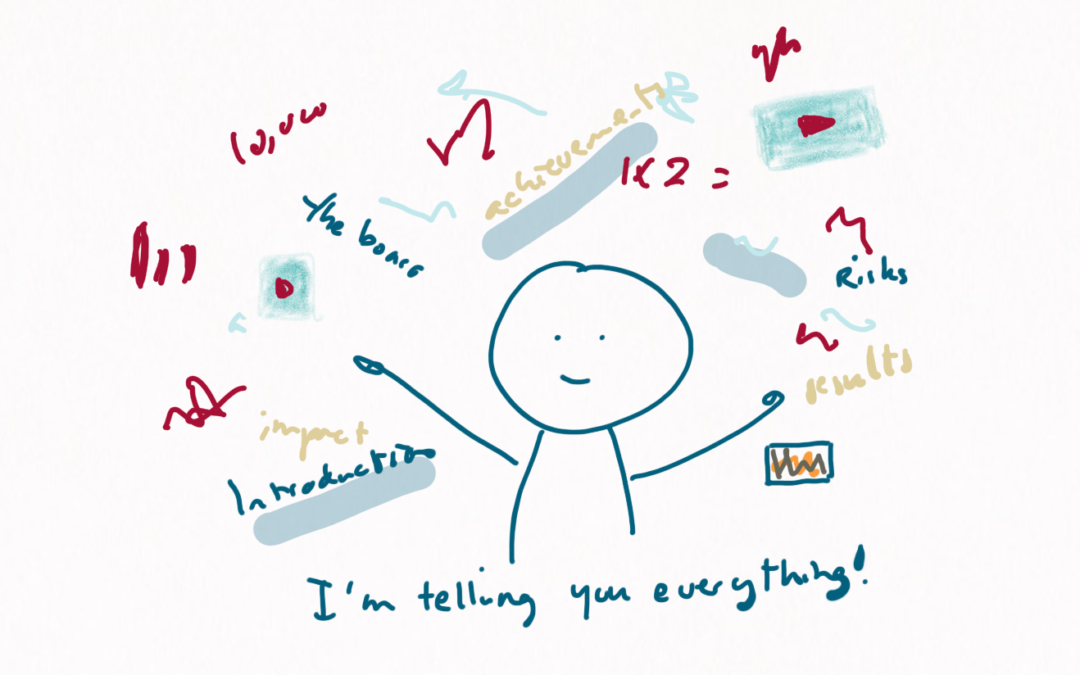One of the words most used when it comes to annual reporting is transparency. We want to be transparent to the community we serve, to our main stakeholders, and to our (future) supporters. But it isn’t always clear what it means, transparency in your nonprofit annual report.
It’s about building trust
If you can be truly transparent, you’ll build trust with your readers. But how does that work? It means that your readers can feel you’ll be truthful. Not just about your successes but also about what didn’t go well. If they feel you’re honest, they’ll trust the good stuff you’ll share more. Because they know you’d tell them if it wasn’t good, too.
My dark secrets?
So yes, true transparency means you’ll need to be clear about things that didn’t work out. Nobody will believe that everything you do is 1000% successful anyway. So your reader will expect to read about a mistake or a failure.
Presenting failures
When you’re sharing something you’re not happy about, make sure you also share what you learned from that. Maybe you found a better way of doing something. Or maybe you learned that this activity isn’t really needed by the community or cause you serve.
Make sure to share these insights and lessons learned. And if possible, how you applied them already. That’s actually the fastest route to building trust. Taking the reader into your confidence by sharing a negative experience, and then showing that you’ve learned from that and can do better next time.
All my bad stuff?
Many people think that transparency is about sharing everything. All the details. But actually, you can totally overwhelm your reader with a gazillion details and it will not be transparent at all. Because the reader can make head nor tail of all the data and information. It will just be like unorganised spaghetti for them. In fact, sharing everything is actually the best way of hiding things. (Check out any legal thriller book or movie if you don’t think that’s true).
So what is transparency
Transparency means sharing relevant information and data in a way that’s relevant and digestible for your reader.
Transparency is about helping your reader understand the key things about your organisation and work. With this understanding, they can form their own opinion about how they see your work, your team and your organisation.
Be choosy
So you’ll need to pick and choose what to share – both your achievements and the challenges you faced and the things that you didn’t get done well or at all. A whole year is a looooong time. It’s simply impossible to include all the details about everything the whole team got done and achieved in a year. So you need to make a selection of both successes and lessons learned to share with your reader. And you’ll need to do it in a way that’s representative of your year.
Be strategic!
What that comes down to is, you’ll need to be strategic. You need to consider what were key milestones in the year and what’s the best way to present them. What’s the main story you want to tell? That will help you combine openness about the past year with a call to action for support in the new year.
Practically
It’s easier to be strategic at the end of the year because you’ll have a perspective with a bit more distance to the events. But it’s also harder, because you may find that a lot of things get overlooked. Even things that could be relevant to your story. One way to make sure you keep track of all important things is to create a monthly look-back visual with your team. A mind map or a drawing or collage of what stood out that month in the work with the community, in contacts with stakeholders, in feedback from (funding) partners or donors, and in the team itself.
How I can help
I can help you with:
- My free checklist helps you to make sure your report is complete: https://www.changingtides.eu/checklistannualreport
- a personal video review. If you have created an annual report and would like to hear my professional opinion, I can create a personal video review for you: https://www.changingtides.eu/annualreportreview
- my comprehensive course. For a clear process with easy steps and guidance by me, you can join my Course Annual Reporting for nonprofits here: https://www.changingtides.eu/COURSEAnnualReporting
Check out my video What are key ingredients of your nonprofit annual report
Want to know more and ask questions?
If you want to discuss this more – jump into my nonprofit support community and get input from a wide range of peers and from myself!
Here is how you can join my free nonprofit support community
You can join my free nonprofit support community on the Heartbeat platform here. This group is a safe space for open exchange and discussion on potentially sensitive topics like boards, nonprofit management, fundraising, etc.
You can visit the community via a browser or via an app. Here is the link to download the Heartbeat chat app in the Google Play store.
Want to support me with a cup of coffee?
The seaside always inspires me and helps me think of articles, videos, workshops and courses I can create for you.
If you want to support me without getting a paid workshop, course or review – you can donate me a coffee and speed up my thinking process!
You can support me here: https://ko-fi.com/suzannebakker
